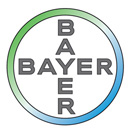Marketing Principles And Policies In Trade Agreement
Publicado el 10/4/2021
calls on signatories to commit to harmonizing compliance assessment through mutual recognition of each other`s procedures. Mutual recognition agreements have the potential to offer real benefits in terms of reducing costs, inefficiencies and barriers to international trade. The latest regional developments in compliance assessment, including early dialogue in the APEC forum, are outlined below in this chapter. Use of discriminatory standards, tests and certification requirements abroad as barriers to U.S. exports.16 In a number of foreign markets, U.S. products are subject to stricter standards and control requirements than domestic products (see Table 4-1 for some examples). Many of the barriers to U.S. products described in the SURIE reports relate to sectors where U.S. industry enjoys significant comparative advantages over its foreign competitors.
This is the case, for example, of capital goods and high-tech goods, particularly in transportation, electrical machinery, medical devices, biotechnology and pharmaceuticals. In the absence of trade barriers, these will be sectors in which U.S. companies have great potential to gain export market share. Table 4-2 describes the key progress made in covering standards and compliance assessments in the Uruguay Round25 agreements. The agreement seeks to reduce trade barriers that are discriminatory in the preparation, adoption or application of standards. It also addresses the prevention of new barriers, especially when they may appear in different compliance security systems. The TBT agreement also has a significant impact on standards set by national and regional governments (such as the EU) and private sector institutions. This section outlines key elements of the agreement to show the progress made during the Uruguay Round with respect to the standardization code negotiated during the Tokyo Round, as well as areas of uncertainty about implementation and the impact on trade26.
To the extent that market unification allows U.S. exporters access to all European Union nations by meeting the import requirements of a single European country, these changes facilitate the increase in U.S. exports. However, new EU product licensing requirements have raised serious concerns about US access to the European market. Changes to EU-European UNION procedures for setting standards and verifying compliance of products with potential effects on the United States of America
- Free Template for Prenuptial Agreement
- Material Handling Agreement Form
- Kentucky Marriage Separation Agreement
- China`s-Parliament-Ratifies-Paris-Climate-Change-Agreement-Ahead
- Contract Law Agreement Example
- Edit Rent Agreement
- Pie Agreement Definition
- Isda Agreement Template Pdf
- Distributor Agreement Auf Deutsch
- Pa Collaborative Agreement Texas


Hipertension Pulmonar Chile de Ramlight Studio está bajo licencia Creative Commons Atribución-No Comercial-Sin Derivadas 3.0 Unported.